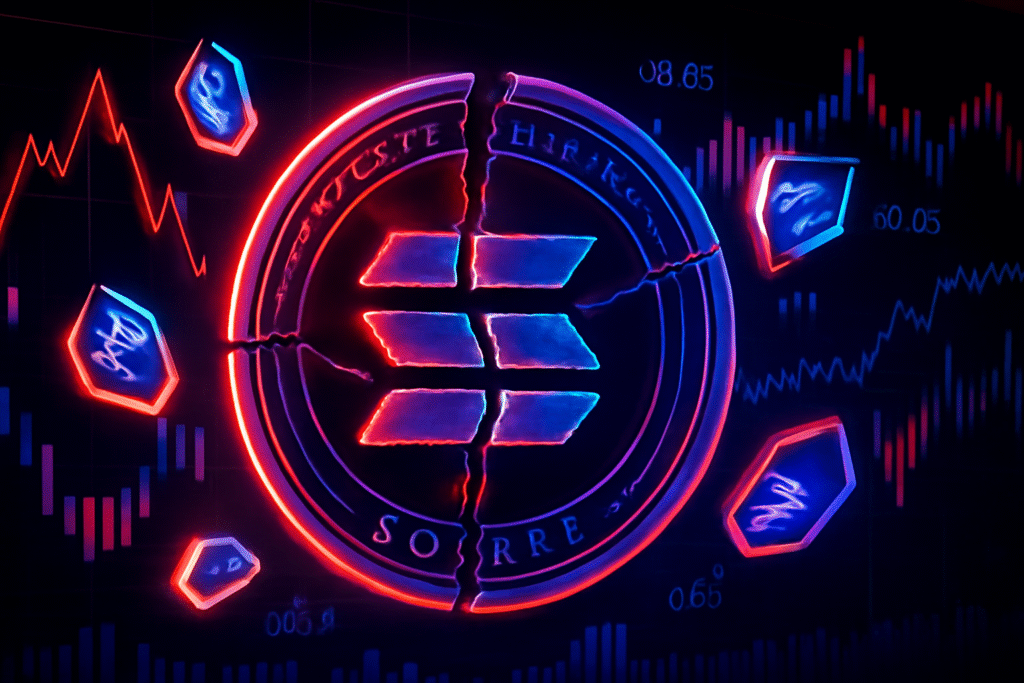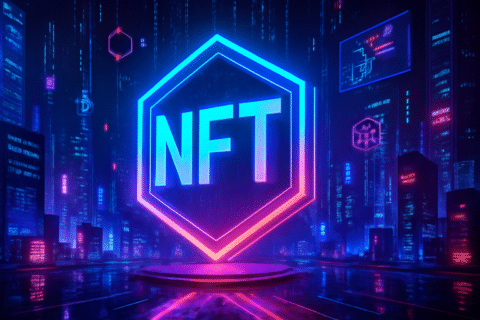Introduction
Ever wondered if there’s a secret vault of free cryptocurrency waiting to be discovered, one that doesn’t demand a massive initial investment or complex trading strategies? What if I told you that navigating the dynamic world of altcoins could lead you to a treasure trove of digital assets, all by simply understanding the nuances of **solana airdrop**s? In a market often perceived as volatile and unpredictable, the idea of receiving free tokens might seem too good to be true. But for those who know how to get solana airdrops, it’s a legitimate and often lucrative path to accumulating wealth in the crypto space. This comprehensive guide will demystify the process, offering a data-driven approach to help beginners and seasoned enthusiasts alike maximize their chances of securing valuable solana airdrops.
Crypto Market Overview
The cryptocurrency market is an ever-evolving landscape, characterized by rapid innovation, shifting trends, and significant volatility. While Bitcoin and Ethereum continue to dominate headlines, the real dynamism often lies within the altcoin and meme coin sectors. These segments have witnessed explosive growth, driven by technological advancements, community engagement, and speculative interest.
In recent years, the market has seen a surge in decentralized finance (DeFi) projects, non-fungible tokens (NFTs), and layer-1 blockchains like Solana. Solana, in particular, has emerged as a formidable competitor to Ethereum, boasting high transaction speeds and lower fees, making it an attractive ecosystem for developers and users alike. This has naturally led to an increase in projects building on Solana, many of which utilize airdrops as a key strategy for token distribution and community building.
Amidst this bustling activity, airdrops have become a popular marketing and distribution mechanism. They provide a unique opportunity for projects to decentralize token ownership, reward early adopters, and generate buzz. For users, airdrops represent a chance to acquire new cryptocurrencies without direct investment, potentially leading to substantial gains if the tokens appreciate in value. The current market sentiment often favors innovation and utility, and projects that offer tangible value within robust ecosystems like Solana are well-positioned for success.

The Core Concept: How Airdrops Actually Work
What Are Airdrops?
At its core, an airdrop is a method of distributing cryptocurrency tokens to a large number of wallet addresses, usually for free. Think of it as a promotional giveaway in the digital world. Projects use airdrops primarily to raise awareness, decentralize token ownership, reward early supporters, and bootstrap a new community. Participants typically receive tokens after completing simple tasks, such as following social media accounts, joining Telegram channels, or holding a specific amount of another cryptocurrency. Solana airdrops, specifically, refer to tokens distributed by projects built on the Solana blockchain.
The concept originated as a way to circumvent traditional fundraising methods and foster genuine community engagement. Unlike an Initial Coin Offering (ICO) or Initial Exchange Offering (IEO), airdrops don’t require users to invest capital directly. Instead, they incentivize participation and spread the word about a new project. For instance, a project might snapshot the wallets holding Solana (SOL) and distribute their new token proportionally to those addresses.
Key Components & Technologies
Airdrops, especially those on the Solana blockchain, rely on several key technological components:
- Blockchain Technology: All airdrops occur on a specific blockchain. For solana airdrops, this is the Solana blockchain, known for its high throughput and low transaction costs. This efficiency makes it ideal for distributing tokens to a large number of participants without incurring prohibitive gas fees.
- Smart Contracts: Many airdrops are executed automatically via smart contracts. These self-executing contracts contain the rules and logic for token distribution, ensuring transparency and immutability.
- Wallet Addresses: Participants need a compatible wallet address to receive airdropped tokens. For Solana airdrops, this means a Solana-compatible wallet like Phantom, Solflare, or Trust Wallet. These wallets generate public addresses where tokens can be sent and stored securely.
- Snapshots: Often, projects take “snapshots” of the blockchain at a specific time. This snapshot records the state of all wallet balances. Tokens are then distributed based on the holdings at the time of the snapshot. This is a common method for rewarding long-term holders or active users within an ecosystem.
- Token Standards: Solana tokens typically adhere to the SPL (Solana Program Library) Token Standard, similar to Ethereum’s ERC-20 standard. This ensures compatibility and interoperability across the Solana ecosystem.
Understanding these components is crucial for anyone looking to understand how to get solana airdrops effectively. It’s not just about getting free tokens; it’s about understanding the underlying mechanics that enable these distributions.
The Data-Driven Perspective
Market Data & Trends
The landscape of airdrops is constantly evolving, influenced by market cycles, regulatory changes, and technological advancements. Historically, airdrops have rewarded early adopters handsomely. Projects like Uniswap, ENS, and dYdX have distributed tokens worth thousands of dollars to eligible users, showcasing the immense potential.
For solana airdrops, the trend has been particularly strong due to the rapid growth of the Solana ecosystem. Data from various analytics platforms indicates a significant increase in the number of projects launching on Solana, accompanied by a rise in airdrop campaigns. For example, in 2023-2024, several notable Solana-based projects hinted at or executed major airdrops, driving considerable user engagement. The cumulative value of these airdrops often runs into millions of dollars, highlighting their significance as a token distribution strategy.
A key trend observed is the shift from simple “snapshot-based” airdrops to “activity-based” airdrops. Projects are increasingly rewarding users who actively participate in the ecosystem—by testing dApps, providing liquidity, staking, or engaging in governance. This ensures that the tokens land in the hands of genuinely interested and contributing community members, fostering a stronger and more engaged user base.
Tokenomics & Market Health
The long-term value of an airdropped token heavily depends on its tokenomics and the overall market health of the project it represents. Tokenomics refers to the economics of a cryptocurrency, including its supply, distribution, utility, vesting schedules, and inflation/deflation mechanisms.
When evaluating a potential solana airdrop, consider:
- Total Supply and Circulating Supply: A lower total supply with a well-managed circulating supply can often lead to higher token value.
- Distribution Model: How are the tokens distributed? Is a significant portion allocated to the team or private investors, or is it genuinely decentralized? Airdrops facilitate wider distribution, which is usually a positive sign for decentralization.
- Utility: Does the token have a clear use case within its ecosystem? Is it used for governance, staking, paying transaction fees, or accessing features? Tokens with strong utility tend to be more resilient to market downturns.
- Vesting Schedules: Are there lock-up periods or vesting schedules for team members and seed investors? This prevents large sell-offs shortly after launch, which can crash the token price.
- Community and Development: A vibrant community and active development team are crucial indicators of a project’s long-term health. Regularly updated roadmaps, transparent communication, and community initiatives are positive signs.
For instance, projects airdropping governance tokens might see increased participation in their DAOs (Decentralized Autonomous Organizations), leading to better decentralized decision-making. Projects that integrate their airdropped tokens into their DeFi protocols, allowing for staking or liquidity provision, often create a self-reinforcing flywheel effect that enhances market health. Understanding these tokenomic factors is essential for evaluating whether a solana airdrop is worth the effort, beyond just the promise of free tokens.
Risks, Challenges & Competition
While the allure of free tokens from the solana airdrop is compelling, it’s crucial to acknowledge the inherent risks and challenges associated with participating in them. The crypto space, by its very nature, is a high-risk, high-reward environment.
Risks of Airdrops
- Scams and Phishing Attacks: This is perhaps the most significant risk. Malicious actors frequently impersonate legitimate projects, creating fake airdrops to trick users into revealing their private keys or connecting their wallets to fraudulent sites. Always verify the authenticity of an airdrop through official channels (project websites, verified social media accounts). Never share your private keys or seed phrases.
- Volatile Token Value: The value of airdropped tokens is highly unpredictable. Many airdropped tokens plummet in value shortly after their distribution as recipients sell off their free allocation. While some become highly valuable, many others become worthless.
- Low Value/Dust Airdrops: Some airdrops distribute tokens worth only a few cents, colloquially known as “dust.” While not inherently harmful, they consume time and may clutter your wallet.
- Tax Implications: Depending on your jurisdiction, received airdrops may be considered taxable income. It’s essential to understand the tax laws in your country regarding crypto assets.
- Smart Contract Vulnerabilities: While rare with reputable projects, there’s a risk of vulnerabilities in the smart contracts used for token distribution, which could lead to loss of funds or exploitation.
- Sustained Engagement Required: For potential future airdrops, especially those tied to ecosystem activity, sustained engagement might be required, consuming time and potentially transaction fees without a guaranteed return.
How Does Solana Airdrops Stack Up Against Competitors?
The concept of airdrops isn’t exclusive to Solana. Other major blockchain ecosystems also utilize this distribution method. Here’s a comparative analysis:
| Feature | Solana Airdrops | Ethereum Airdrops | Other L1s (e.g., Avalanche, Polygon) Airdrops |
|---|---|---|---|
| Transaction Fees | Very Low (cents) | High (can range from a few dollars to hundreds during congestion) | Generally low to moderate, varying by network congestion and design |
| Transaction Speed | Extremely High (thousands of transactions per second) | Moderate (tens of transactions per second) | Moderate to High (hundreds to thousands per second) |
| Eligibility | Often based on holding SOL, interacting with Solana dApps, or staking. | Often based on holding ETH, using specific dApps, or being an early user. | Varies by network, often similar to Solana/Ethereum requirements. |
| Ecosystem Size | Rapidly growing with many new projects. | Mature, vast, and well-established ecosystem. | Growing, with specific niches and regional strengths. |
| Tools/Wallets | Phantom, Solflare, Trust Wallet. | MetaMask, Ledger, Trezor. | MetaMask (for EVM-compatible chains), native wallets. |
| Community | Enthusiastic, tech-focused, and rapidly expanding. | Large, diverse, and well-entrenched. | Varied, depending on the specific blockchain. |
| Potential | High potential for high-value airdrops from new, innovative projects. | Historically delivered high-value airdrops (e.g., UNI, ENS). | Good potential but fewer mega-airdrops compared to ETH historically. |
Solana airdrops have a distinct advantage due to Solana’s technical prowess. The low transaction fees and high speeds make it economically viable for projects to distribute tokens to a massive number of users. This contrasts sharply with Ethereum, where high gas fees can make small-value airdrops impractical or even unprofitable for the recipient. While other Layer 1 solutions offer similar benefits, Solana’s current trajectory and developer adoption place it as a prime candidate for future lucrative airdrops.

The Future Outlook
What’s Next for Airdrops?
The future of airdrops, especially those within vibrant ecosystems like Solana, appears bright and increasingly sophisticated. We can anticipate several key trends:
- Increased Focus on Active Participation: Simply holding tokens might become less common for eligibility. Projects will increasingly emphasize rewarding users who actively contribute to their network through staking, providing liquidity, participating in governance, or consistent dApp usage. This shift aims to filter out mercenary capital and foster a more engaged and loyal community.
- Sybill Attack Prevention: As airdrops become more valuable, projects are investing heavily in sophisticated Sybill attack prevention mechanisms. These mechanisms aim to prevent a single entity from creating multiple fake accounts to claim excessive amounts of airdropped tokens. This might involve more stringent verification processes or advanced on-chain analysis.
- Cross-Chain Airdrops: With interoperability becoming a major theme in crypto, we might see more cross-chain airdrops, rewarding users who participate across different blockchain networks, especially those bridged to Solana.
- NFT Airdrops: Beyond fungible tokens, projects may increasingly airdrop NFTs to special community members, early supporters, or those who achieve certain milestones within their ecosystem. These NFTs could grant special access, benefits, or future airdrop eligibility.
- Regulatory Scrutiny: As airdrops gain prominence, regulatory bodies worldwide are starting to pay closer attention. Future airdrops might need to navigate clearer regulatory guidelines regarding token classification, distribution methods, and tax implications. This could lead to more structured and compliant airdrop campaigns.
- “Learn-to-Earn” and “Participate-to-Earn” Models: Airdrops could evolve into more integrated “learn-to-earn” or “participate-to-earn” models, where users earn tokens by learning about the project or actively using its services, blurring the lines between education, engagement, and reward.
For solana airdrops, this means projects will leverage Solana’s high performance to run more complex eligibility criteria and distribute tokens efficiently. The continued growth of DeFi, NFTs, and GameFi on Solana will naturally lead to more opportunities for users to qualify for these value-added distributions. Staying informed about new project launches and ecosystem activity on Solana will be paramount for anyone looking to capitalize on these future trends.
Conclusion
The journey into the world of **solana airdrop**s reveals a fascinating avenue for acquiring digital assets and engaging with innovative projects. We’ve explored the core mechanics of how airdrops work, delved into the data-driven trends showcasing their increasing value and sophistication, and highlighted the critical importance of understanding tokenomics. While the allure of free tokens is undeniable, we’ve also underscored the vital risks, from scams to market volatility, emphasizing that vigilance and research are your strongest allies.
Compared to other ecosystems, Solana stands out for its efficiency and burgeoning project landscape, making it a fertile ground for future airdrop opportunities. As the crypto market evolves, so too will airdrop strategies, shifting towards rewarding active participation and robust Sybill prevention. For those looking to maximize their gains from how to get solana airdrops, continuous learning, active engagement with the Solana ecosystem, and diligent security practices are non-negotiable.
Ready to claim your piece of the decentralized pie? Share your most successful airdrop stories in the comments below! What Solana projects are you currently watching for potential airdrops? Don’t forget to subscribe to our newsletter for exclusive insights, expert tips, and the latest news on crypto airdrops and market trends. Your crypto journey is just beginning!
FAQs
Q1: What is a Solana airdrop?
A1: A solana airdrop is a free distribution of cryptocurrency tokens to users’ Solana-compatible wallet addresses by projects built on the Solana blockchain. It’s a marketing strategy to increase awareness, decentralize token ownership, and reward early adopters or community members.
Q2: How can I find legitimate Solana airdrops?
A2: To find legitimate solana airdrops, always rely on official sources:
- Follow reputable airdrop aggregators (e.g., Airdrops.io, DappRadar).
- Check official announcements from Solana projects on their websites or verified social media channels (Twitter, Discord, Telegram).
- Engage with the Solana community forums and groups.
- Be wary of unsolicited messages or posts promising guaranteed high returns.
Q3: What do I need to participate in a Solana airdrop?
A3: Generally, you need:
- A Solana-compatible wallet (e.g., Phantom, Solflare, Trust Wallet) to receive the tokens.
- Some SOL tokens in your wallet for potential transaction fees (though airdrops themselves are free, subsequent actions with the tokens might incur fees).
- To complete specific tasks, as required by the project (e.g., following social media, joining Telegram, interacting with a dApp, staking SOL).
Q4: Are Solana airdrops safe?
A4: While the concept of an airdrop is safe, the crypto space is rife with scams. The primary risk comes from fraudulent airdrop schemes designed to steal your private keys or funds. Always verify the source of the airdrop, never share your private keys or seed phrase, and only connect your wallet to reputable sites.
Q5: What are the typical eligibility criteria for a Solana airdrop?
A5: Eligibility criteria vary widely but commonly include:
- Holding a certain amount of SOL in your wallet.
- Staking SOL on liquid staking platforms.
- Interacting with specific DeFi protocols or dApps on Solana.
- Providing liquidity to Solana-based decentralized exchanges.
- Being an active member of a project’s community (e.g., Discord, Telegram).
- Holding specific NFTs or other tokens within the Solana ecosystem.
Q6: Do I have to pay taxes on airdropped tokens?
A6: In many jurisdictions, airdropped tokens are considered taxable income at the time of receipt, based on their fair market value. It’s crucial to consult with a tax professional familiar with cryptocurrency taxation in your specific region to understand your obligations.
Q7: Will I get rich from Solana airdrops?
A7: While some individuals have received tokens worth thousands of dollars from airdrops (e.g., Uniswap, ENS), this is not a guaranteed outcome. The value of airdropped tokens can be highly volatile, and many become worthless. Airdrops should be seen as a way to engage with new projects and potentially gain some free assets, rather than a guaranteed path to wealth.
Q8: What is a “snapshot” in the context of Solana airdrops?
A8: A snapshot is a specific point in time when a project records the state of all wallet addresses on the Solana blockchain. If an airdrop is based on holding certain tokens, only addresses that held those tokens at the exact time of the snapshot will be eligible to receive the airdrop, regardless of later changes to their holdings.
Q9: How do I avoid scam airdrops?
A9:
- Verify Sources: Only trust official project websites, verified social media accounts, and reputable crypto news outlets.
- Never Share Private Keys: Legitimate airdrops will never ask for your private keys or seed phrase.
- Be Skeptical of Unsolicited Offers: If it seems too good to be true, it probably is.
- Check Official Links: Always double-check URLs for subtle misspellings.
- Use a Dedicated Wallet: Consider having a separate wallet for participating in airdrops with minimal funds, distinct from your main crypto holdings.




